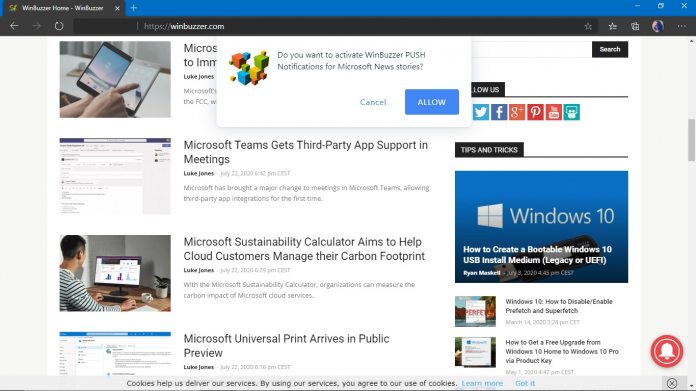According to Redmond’s survey, Edge users generally dislike notifications unless they happen to be important. Naturally, deciding which notification requests are valuable and which are not is difficult for a browser. However, Microsoft thinks it has the tool for the job. Microsoft Edge is getting an option for “quiet notification requests”. The feature has dropped on version 84 of Microsoft’s new Chromium-based browser that dropped in preview this week. Under the feature, users see notification requests hidden behind a bell icon in the address bar. Previously, Edge would display the full request. “With quiet requests enabled, site notification requests made via the Notifications or Push APIs will appear as a bell labeled “Notifications blocked” in the address bar, as opposed to the typical full flyout prompt,” explain members of the Microsoft Edge team.
New Feature
With this new approach, users basically have the freedom to see the notification requests they want to and ignore those they have no interest in. “We’ve opted to turn on this setting by default for users in Microsoft Edge 84 due to high volumes of user feedback around unwanted notification subscriptions; we hope quiet notification requests will help reduce unintentional subscriptions,” Microsoft says. Yes, this is almost exactly the way Google Chrome and Firefox handle notifications. That said, Microsoft says there is a slight difference in Microsoft Edge. Specifically, the full flyout prompt for notifications appears when “data suggests users find a given site’s notification request valuable.” That’s interesting, but the company does not say how it will determine when a user thinks the notification is valuable. It is worth noting the company says users can opt to keep full notification requests if they want. Earlier today, we reported on Microsoft now roadmapping Edge features to help enterprise users stay stable through releases. Available at the Microsoft 365 Roadmap portal, customers can see what enterprise features are coming, and when they’ll arrive.





